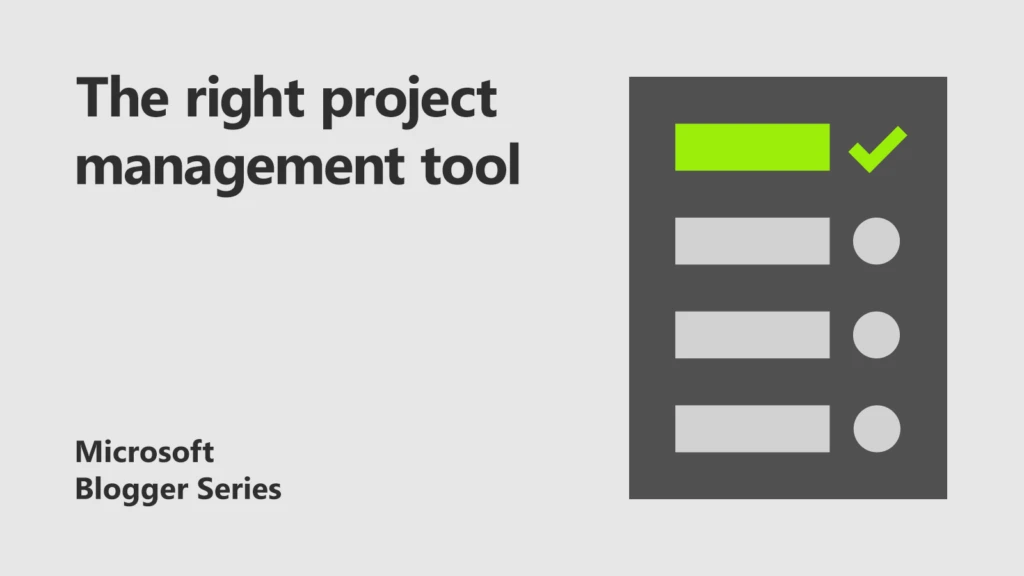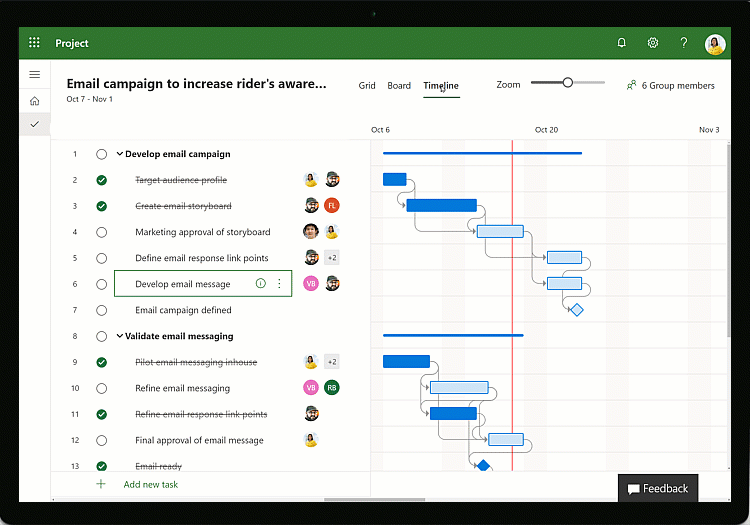
How to find the right project management tool
Everyone manages projects. We just don’t call them projects. Ever plan a birthday party? How about a trip? Ever had to move to a different house? These are all projects.
While many projects can be quite simple, it can get very complicated very quickly. The reality is that coordinating different people and making sure things go smoothly, on time, and on budget isn’t always easy. It takes time and effort. A big part of what can make this easier is just using the right tools for you and your team.
Most people I know manage their business projects and plans on spreadsheets. And while spreadsheets are great, and can do wonders in the right hands, they’re not really designed to help you manage projects.
Step 1 – Figure out what could be improved
To pick the right tool, you need to understand what could help make the process managing easier for you and your organization. Here a couple questions that can help shed light on what those improvements could be.
Consider…
- What are we spending our time and resources on?
- What problems need to be solved?
- Where can we be more productive?
Step 2 – Figure out what you need
Now that we know what we could do better, we can start looking at how to do this.
Capabilities can widely vary from one software to the next. The simplest tools can offer an organised view and management for a To-Do list; the more complex tools allow allocation of tasks with dependency and users, as well as resource management and high reporting capabilities.
These are some of the capabilities you might want to consider when evaluating project managing solutions:
| Simplest | More Complex | |
|
|
|
| • Ease of Use • Security & Compliance • Cost | ||
A quick measure to how good a solution is would be to evaluate:
– The amount of time and work it can save across the organisation
– The risks it can help detect and mitigate
– The benefits it can deliver through helping finishing projects on time and on budget?
Not all capabilities are as important, and what might be important can vary from one project or person to the next. To figure out what capabilities are relevant to your case, go back to what it is you want to achieve.
Step 3 – Test it out
So much about deployment depends on the way we work. There is no such thing as the perfect tool. Whether one solution is right or not depends on how people use it – and if they use it.
- Roll out your solution to a single department first
- Identify ‘champions’ – people that are enthusiastic about the tool and can help deploy it and teach others how to use it
- Encourage time and training so all team members understand how to use the tool, and its benefits
- Record results, quirks, and any additional considerations necessary for a successful implementation
- Ask for honest feedback and, where appropriate, act upon it
Step 4 – Review how people are using the tool
Even after a solution has been found, make the time to observe and analyse how other people are using the tool.
Successful implementation depends on internal buy-in at all levels of the business. Make sure they can use it – but just as importantly, ensure they understand the benefits it brings to their roles. These concerns will vary, depending on the department and job role, just as the capabilities they use will vary.
- Record positive and negative reactions
- Listen to and act on post-implementation feedback
- Respond with personalised comments, not blanket statements – for instance, the concerns of the leadership team won’t be the same as those in the finance department
- Hold additional training sessions – don’t just show employees how to use the system, help them master it
Introducing a project management tool into your company is a project in itself. The best advice: choose wisely. That’s why Microsoft Project promises to offer the complexity required to fit the needs of your organisation, with the ease-of-use employees demand, empowering them to be more productive and efficient than ever before.

Find out more
Microsoft Project is a complete cloud-based project and portfolio management solution, designed to help you align, prioritise and optimise your projects, your way. Simple, intuitive, and designed for everyone, Microsoft Project is a powerful, scalable platform for managing any type of work – from team projects to the most complex portfolio and resource management initiatives.
About the author
 Paulina is a new Microsoft Aspire hire who just graduated from the University of Cambridge, where she completed her MBA. She is currently part of the Modern Workplace business group in the role of Product Marketing Manager for Project and Visio, where (apart from writing blogs like this one) she localises the benefits and uses of these Microsoft solutions to UK market. Paulina has a green belt in lean six sigma and a strong belief in the search for constant improvement in everything we do; be it learning a new language, improving at a particular sport, or just being smarter about the way we work.
Paulina is a new Microsoft Aspire hire who just graduated from the University of Cambridge, where she completed her MBA. She is currently part of the Modern Workplace business group in the role of Product Marketing Manager for Project and Visio, where (apart from writing blogs like this one) she localises the benefits and uses of these Microsoft solutions to UK market. Paulina has a green belt in lean six sigma and a strong belief in the search for constant improvement in everything we do; be it learning a new language, improving at a particular sport, or just being smarter about the way we work.




